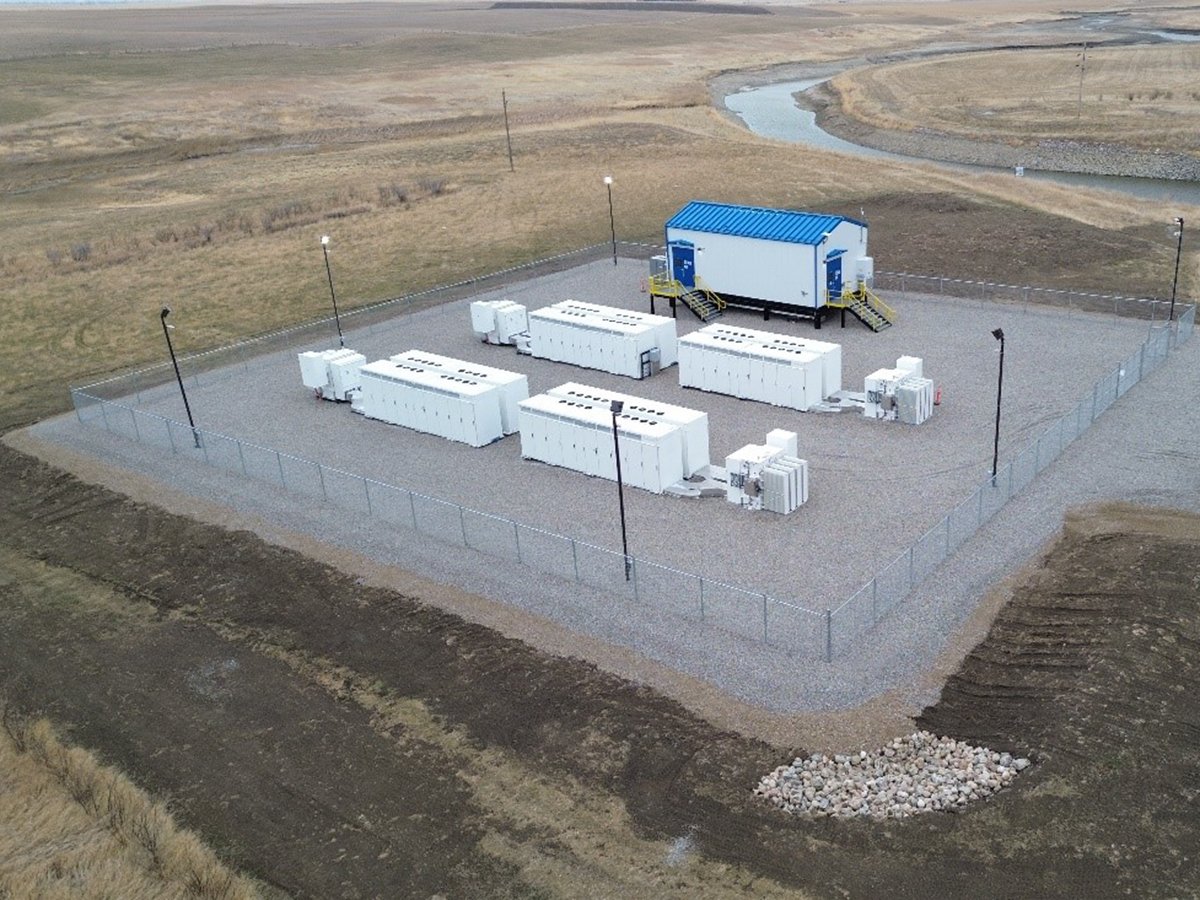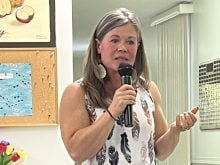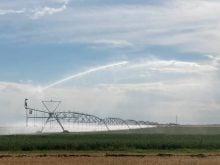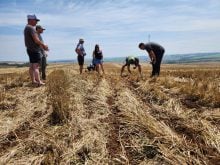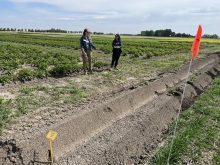The St. Mary River Irrigation District and the Raymond Irrigation District continue to make their presence felt in the renewable energy market for hydro and solar.
They own Irrican Power Ltd., which formed in 1988 in response to the Alberta government’s Small Power Research and Development Program, which assured a guaranteed price and market for power and made small power projects in the province viable.
Irrican’s projects include four solar sites, such as the Bow Island Lateral 12 and 40 Mile (400 watt solar modules) reservoir pump station.
Read Also

StatCan stands by its model-based crop forecast
Statistics Canada’s model-based production estimates are under scrutiny, but agency says it is confident in the results.
SMRID’s head office in Lethbridge is approximately 75 per cent net zero, thanks to the solar sites.
“Just to be able to reduce our operating costs by having the solar panels there is a good win for the irrigators, the SMRID specifically,” said David Westwood, general manager of SMRID and Irrican Power president.
“It allows us to operate the district more efficiently in a more cost-effective way.”
The two newer solar sites were built in partnership with RenuWell Energy Solutions, the Municipal District of Taber, Iron and Earth, Medicine Hat College, SkyFire Energy and the Orphan Well Association.
The solar arrays, located in Barnwell and Fincastle, re-purpose two orphaned well sites and convert them into micro generation sites, producing slightly more than one megawatt each, which contributed $226,000 in revenue for Irrican in 2023.
“It’s a great environmental reclamation story. We picked two orphaned well sites that were abandoned by energy companies and they weren’t producing anymore. The MD of Taber wasn’t receiving revenue any more with property tax by the leasee,” said Westwood.
“Now, they have become productive assets for them and the landowner who had provided the land and took it out of their agricultural operations at one point to put wells in. At least those parts of their farm are becoming productive again through the solar initiative.”
There are approximately 170,000 abandoned wells in the province, according to the Alberta Energy Regulator, with 4,700 of them classified as orphaned by the AER and have no responsible owner.
Westwood hopes the two test projects in Barnwell and Fincastle will serve as a springboard to more orphaned well sites becoming productive for landowners.
“Unfortunately, there are way too many orphaned well sites, so I’m hoping this might be a footprint as we continue to monitor the economic progress,” he said.
”Hopefully, this is a good template that this could be done strategically at other locations where it makes sense. It’s not going to be suitable for every location with an orphaned well, but other ones hopefully, they can look at re-purposing and making that land active again.”
Both the SMRID and RID draw water from the St. Mary Main Canal, where the greatest potential for hydro power development exists.
The Raymond Reservoir Hydroelectric, Chin Chute Hydroelectric and Drops 4/5/6 Hydroelectric plants cost a combined $59.4 million to build, with the last coming online in 2004, with all the generated power certified as green.
Irrican’s latest project is its Battery Energy Storage System (BESS) at the Raymond hydroelectric plant, which was unveiled earlier this summer.
It will allow Irrican to generate additional revenue through the province’s ancillary services and energy-only markets, as well as help to manage grid curtailments. The facility will be ussed to support the Alberta Electric System Operator’s increasing demands for grid reliability.
“It allows us to take advantage of an existing asset we have, which is the connection to the provincial power grid at our Raymond hydro site,” Westwood said.
“There is a lot of people interested in doing best storage, which I think is going to become seen as a much more viable option as you see renewables come onto the grid.”
The new facility consists of 15.4MW/30.8MWh of lithium-ion battery storage systems, which have the ability to both charge from the Irrican Raymond Hydropower plant or from the Alberta grid opportunistically to optimize revenue for the facility.
Other advantages include grid stabilization, managing frequency fluctuations in the provincial power grid, providing stability where other renewables such as wind or solar can be inconsistent, and responding quickly to sudden changes in power demand.
The hydro plants run 24/7 during irrigation season, as long as water is available. The batteries will give Irrican the ability to store power at low prices and sell at higher market prices.
“Not just from population growth, obviously, with the province tipping over five million within the last couple of months,” he said.
“There is discussion of significant data centre growth within the province to support artificial intelligence and large data processing. That power needs to come from somewhere, and that is going to tax the grid. Being able to provide the ability to make the frequency of the grid more stable, I think we are providing a very good service there. Not just as a business model, but for stability for Albertans in their homes.”
He said the BESS site, coupled with the hydro site, is the first in Western Canada.
“We are getting to a point due to frequency fluctuations, it is not the most stable, and at certain peak times could become a bit tenuous for the province.”
From 2014-24, Irrican generated more than $85 million in revenue through the generation of clean hydro power using existing irrigation infrastructure. The profits are used primarily to support and maintain the irrigation infrastructure within the SMRID and RID.
“To have the great foresight of the previous board of the former RID, SMRID and the former TID (Taber Irrigation District, which SMRID absorbed) to take that plunge and create Irrican to build the first three hydro plants,” he said.
”But, now that we are expanding into other renewables, I feel we are leveraging on the fact we have a great irrigation network and we are able to utilize it in different ways in the energy market in providing good, clean energy to the grid.”



